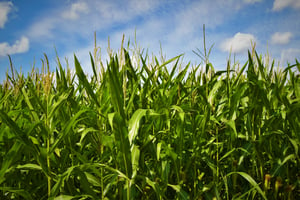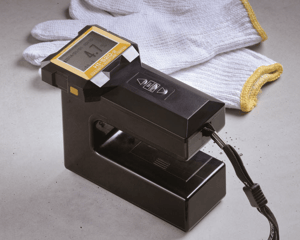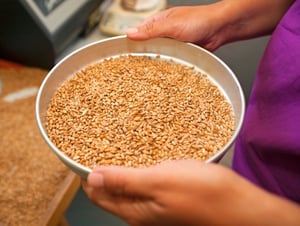 As evening frost begins to gather on our grass at home, we pull our fall sweaters out of storage and temperatures start to dip at night, it’s time to start thinking about those crops that are still waiting in the field for harvest.
As evening frost begins to gather on our grass at home, we pull our fall sweaters out of storage and temperatures start to dip at night, it’s time to start thinking about those crops that are still waiting in the field for harvest.
Like other crops, these late-maturing fields require careful attention from harvest to storage to ensure their longevity and success. Harvesting too soon or storing at the wrong moisture levels can affect the storage lifespan and even lead to irreparable spoiling. It could make for an entire harvest that’s been ruined by having the wrong moisture levels.
Why does this matter? Cooler-than-normal weather and late planting can delay the maturation of certain crops that may not be ready to harvest before the first killing frost, which can then affect the drying and storing processes. These crops can be tracked closely using growing degree days (GDDs), or heat units that help measure the development of plants.
Suggestions on Managing the Harvest of Late Crops
Crops that were slow to develop or were planted late thanks to a particularly rainy spring season as we saw in the spring of 2019 will continue to mature late into the fall. When this happens, harvest management is crucial to guard against reduced crop yields and poor grain quality, which can lead to reduced income earned for crops.
Especially with crops like corn, a late harvest means farmers must adjust their harvesting processes. Crops tend to be significantly wetter with a late harvest, which means higher drying costs and potential mechanical damage to the grain. Additionally, freezing temperatures may happen before crops reach their maturity, which can reduce crop yields.
Other factors can affect late plantings and the subsequent late harvest of crops, such as:
- Potential disease threats
- Harvest moisture levels
- Grain fill levels
What should be done to retain the quality and caliber of late-harvest crops? Here are a few tips from DuPont Pioneer on how to protect and harvest late-maturing corn crops.
Waiting for Corn to Dry
- Monitor silking to predict which fields will reach suitable moisture levels for harvest first.
- Consider harvesting and selling more crop as high-moisture corn.
- Think about locking in a price for the additional fuel you’ll need for longer drying times after harvest. (Energy costs for high-temperature drying corn will be about $0.016 per bushel per point of moisture removed using $0.70 per gallon propane.)
An instrument like the OT300 Automatic Harvest Determiner can help pinpoint the right time to harvest crops and improve quality. Previously this judgment had to be made with the human eye by understanding the color of the grain and the ripeness of the plant. Kett’s OT300 can help optimize harvesting time, even during a late harvest season.
To use the OT300, each day’s temperature is measured before harvesting and the determiner helps farmers understand when the grain reaches its peak ripeness. Even with late-maturing crops, this instrument is useful in knowing when crops are nearing optimum harvest time.
Other useful instruments to have on hand when waiting for late-maturing corn crops to dry? The PM650 Portable Instant Grain and Seed Moisture Meter can help you instantly track moisture levels as rain levels increase and temperatures start to decrease in the field. Other moisture meters like the Model Riceter F can help to determine the best time for grains to be harvested, keeping crop yields high and costs to farmers and consumers low.
When Harvesting Wet Corn
- Adjust your combine settings to harvest wet grain
- Set cylinder and rotor speed to the low end of the suggested range
- Set concave clearance to the widest end of the suggested range
- Consult with your combine manufacturer for additional settings to allow for harvesting wet grain
When Preparing, Drying and Storing Wet Corn
- Adjust drying temperatures for corn that contains 25- to 30-percent moisture (or even higher) to prevent the scorching of grain, which can cause stress cracks that will increase the chance of kernel breakage
- Screen grain to eliminate broken kernels and maintain even moisture levels
- Maintain consistent aeration until grain moisture is equal throughout
- Carefully monitor stored grain by checking it at least once every two weeks
For late-maturing crops, drying methods must be altered. Typical drying temperatures of 200 degrees Fahrenheit must be reduced to less than 160 degrees Fahrenheit to prevent scorching, browning and cracking. Shelled corn must be dried to around 25-percent moisture content for safe storage and must be carefully measured for moisture levels after drying and cooling for an accurate reading.
The K Online Near-Infrared Moisture Meter is suitable for use in the lab or in the production line to monitor the moisture level of crops after they have been dried. With a refresh rate of 0.2 seconds, it collects a wide range of measurements to ensure consistency of moisture levels throughout the total crop.
Once stored, it’s wise to keep a close eye on moisture levels, which means even during storage, crops should be regularly tested. You can test samples taken from various points throughout a grain silo using the non-destructive PM450 Portable Instant Grain and Seed Moisture Meter to ensure proper moisture levels while grain is stored.
Getting Through a Challenging Late-Maturing Crop Season
If you have concerns about late-maturing crops and how to best protect the quality, yield and profits of your crops, our engineers at Kett have developed highly accurate, easy-to-use instruments that can help you get through the late harvest with as little impact as possible. With laboratory-grade instruments available to use in the field, during drying and in the storage of these crops, Kett has what you need to mitigate the damage of late maturation.
Can we help you prepare your crops for harvest, drying and storage? Contact us today to learn more about protecting your late-maturing crops.


